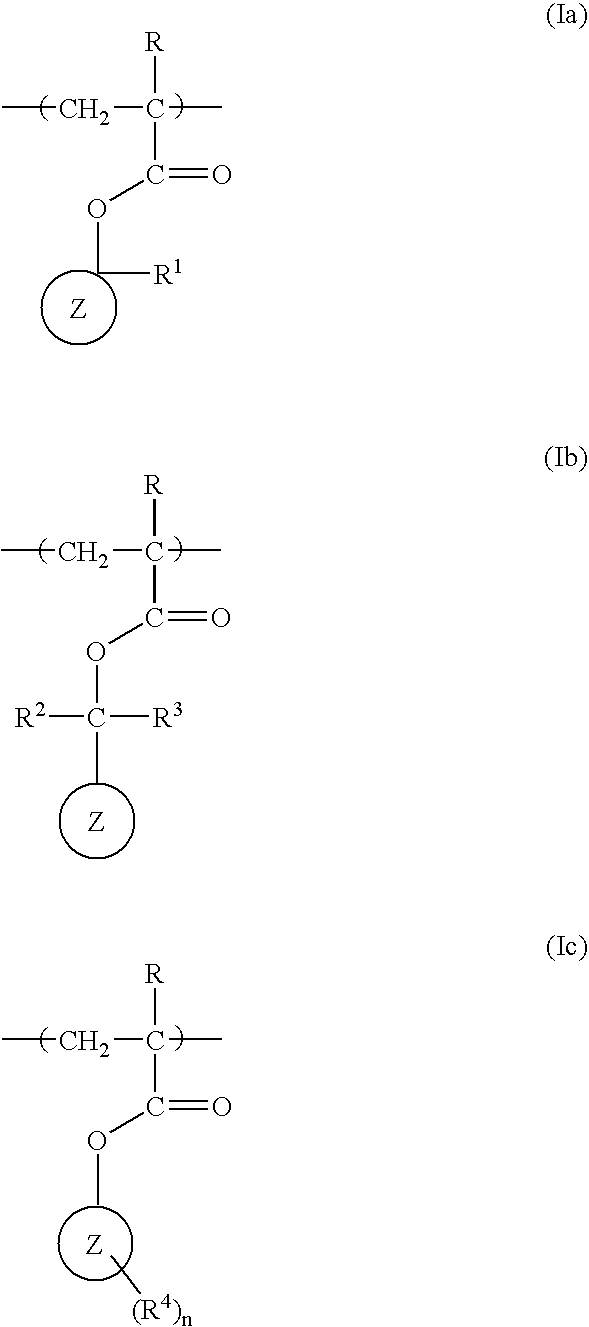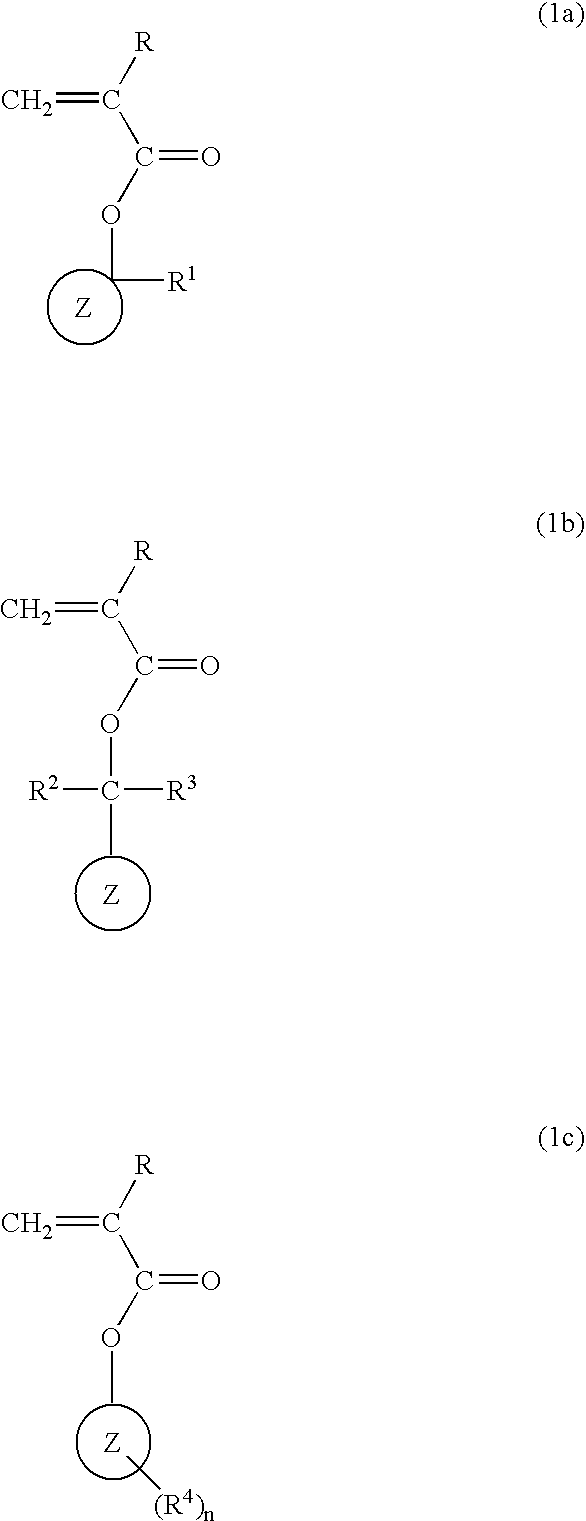Photoresist resin and photoresist resin composition
a technology of photoresist resin and resin composition, which is applied in the direction of photosensitive materials, instruments, photomechanical equipment, etc., can solve the problems of trouble or problems in the manufacturing process of semiconductors, and it takes a lot of time and effort to remove them by filtration
- Summary
- Abstract
- Description
- Claims
- Application Information
AI Technical Summary
Benefits of technology
Problems solved by technology
Method used
Image
Examples
example 1
[0133] Preparation of Photoresist Resin Having the Following Structure
[0134] In a reactor equipped with a stirrer, a thermometer, a reflux condenser, two dropping vessels and a nitrogen inlet tube was charged 2500 g of propylene glycol monomethyl ether acetate (PGMEA) and was heated to 77° C. A monomer solution and a polymerization initiator solution were then added dropwise to the reactor from different dropping vessels using metering pumps, respectively, over six hours. The monomer solution contained 500 g of 1-hydroxy-3-methacryloyloxyadamantane (HMA) [Compound Number [2-5] (methacrylate)], 500 g of 5-methacryloyloxy-2,6-norbornanecarbolactone (MNBL) [Compound Number [2-10] (methacrylate)] and 500 g of 2-methacryloyloxy-2-methyladamantane (2MMA) [Compound Number [1-1] (methacrylate)] dissolved in 4000 g of propylene glycol monomethyl ether acetate (PGMEA). The polymerization initiator solution contained 93 g of dimethyl-2,2′-azobis(2-methylpropionate) (initiator; V-601, availab...
example 2
[0135] Preparation of Photoresist Resin Having the Same Structure as Example 1
[0136] In a separable flask equipped with a stirrer, a thermometer, a reflux condenser, two dropping funnels and a nitrogen inlet tube was charged 25 g of propylene glycol monomethyl ether acetate (PGMEA) and was heated to 77° C. A monomer solution and a polymerization initiator solution were then added dropwise to the separable flask from different dropping funnels, respectively, over six hours. The monomer solution contained 5 g of 1-hydroxy-3-methacryloyloxyadamantane (HMA) [Compound Number [2-5] (methacrylate)], 5 g of 5-methacryloyloxy-2,6-norbornanecarbolactone (MNBL) [Compound Number [2-10] (methacrylate)] and 5 g of 2-methacryloyloxy-2-methyladamantane (2MMA) [Compound Number [1-1] (methacrylate)] dissolved in 40 g of propylene glycol monomethyl ether acetate (PGMEA). The polymerization initiator solution contained 0.93 g of dimethyl-2,2′-azobis(2-methylpropionate) (initiator; V-601, available fro...
PUM
| Property | Measurement | Unit |
|---|---|---|
| wavelength | aaaaa | aaaaa |
| molecular weight distribution | aaaaa | aaaaa |
| temperature | aaaaa | aaaaa |
Abstract
Description
Claims
Application Information
 Login to View More
Login to View More - R&D
- Intellectual Property
- Life Sciences
- Materials
- Tech Scout
- Unparalleled Data Quality
- Higher Quality Content
- 60% Fewer Hallucinations
Browse by: Latest US Patents, China's latest patents, Technical Efficacy Thesaurus, Application Domain, Technology Topic, Popular Technical Reports.
© 2025 PatSnap. All rights reserved.Legal|Privacy policy|Modern Slavery Act Transparency Statement|Sitemap|About US| Contact US: help@patsnap.com



